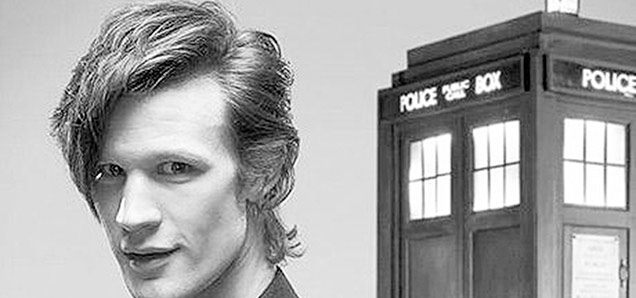G33K LYFE: Space, time and other things, Part 2
 CREDIT: BBC
CREDIT: BBCEleventh Doctor Matt Smith is handing the keys to the TARDIS over to Doctor number 12, Peter Capaldi.
In last week's column, I gave readers a brief intro into the world of Doctor Who, the longest-running television program in history. On November 23, Doctor Who will be celebrating its 50th anniversary, a landmark that rarely gets the chance to be celebrated in regards to anything, let alone something as unstable as a modern-day television program.
Upon the initial airing of Doctor Who in 1963, British audience were instantly drawn to the tales that were being told, as science fiction was still a relatively rare genre at the time, and there had never been a true attempt to bring these space-themed stories to British television. The program was originally characterized not only for its creative lead character and ambitious ideas, but primarily for its low budget and the novelty of seeing everyday items converted into something fantastic before audiences' eyes. This trend is most obvious when looking at some of its most iconic villains, which were originally created using very basic, everyday materials.
This low-budget approach followed the show into its revival in 2005, with the early episodes of the revived series (New-Who as it has been dubbed in some fan quarters) staying true to the approach that had made the original series such an indescribable success. The comeback episode “Rose,” which reintroduced The Doctor to an entirely new generation, is probably the best example of this approach, being based in a regular London suburb and featuring a threat that was less than visually terrifying (living alien mannequins), but still a success due to the strong, character-driven plot. As the show has found more and more success in the modern era, the budget for the program has grown exponentially, with CGI-heavy set pieces that would not look out of place in a feature film, and featuring appearances by some of the best acting talent that Britain has to offer.
Eleven different actors have portrayed The Doctor, and every man to portray this character has put his own unique spin on the way he brings the character to life. The Doctor, regardless of which incarnation is on the screen, has for a long time been one of the most visually recognizable characters, such as the six-foot scarf of the Fourth Doctor or the “cool” bowtie of today's 11th incarnation. The costume designers have always aimed to create the image of someone who is totally removed from the realities of how the human race presents himself, and also to capture the personality of a particular incarnation be it whimsical or serious.
Doctor Who is at a major turning point for the future of the series. Once the 50th anniversary special airs next week, current Doctor and fan favourite Matt Smith is handing over the TARDIS keys to the much older Peter Capaldi, most famous as the profanity spewing government spin doctor Malcolm Tucker from BBC's The Thick of It. Capaldi's debut will officially make him the oldest actor to portray The Doctor, a move that has raised some concerns in the newer generation of Doctor Who fans (admittedly mainly the female ones) due to the trend of The Doctor being a younger man (Smith was 26 when he debuted), but the casting announcement has raised excitement among those familiar with Capaldi's work, as well as those who understand that The Doctor is over 1,000 years old. Despite these concerns, however, it seems that the future of the program is safer than it has ever been, with the current incarnation of the show hitting a global popularity that it never had in its original run and a brand new generation of fans that have fallen in love with the exploits of a mad alien flying around in a blue box.













